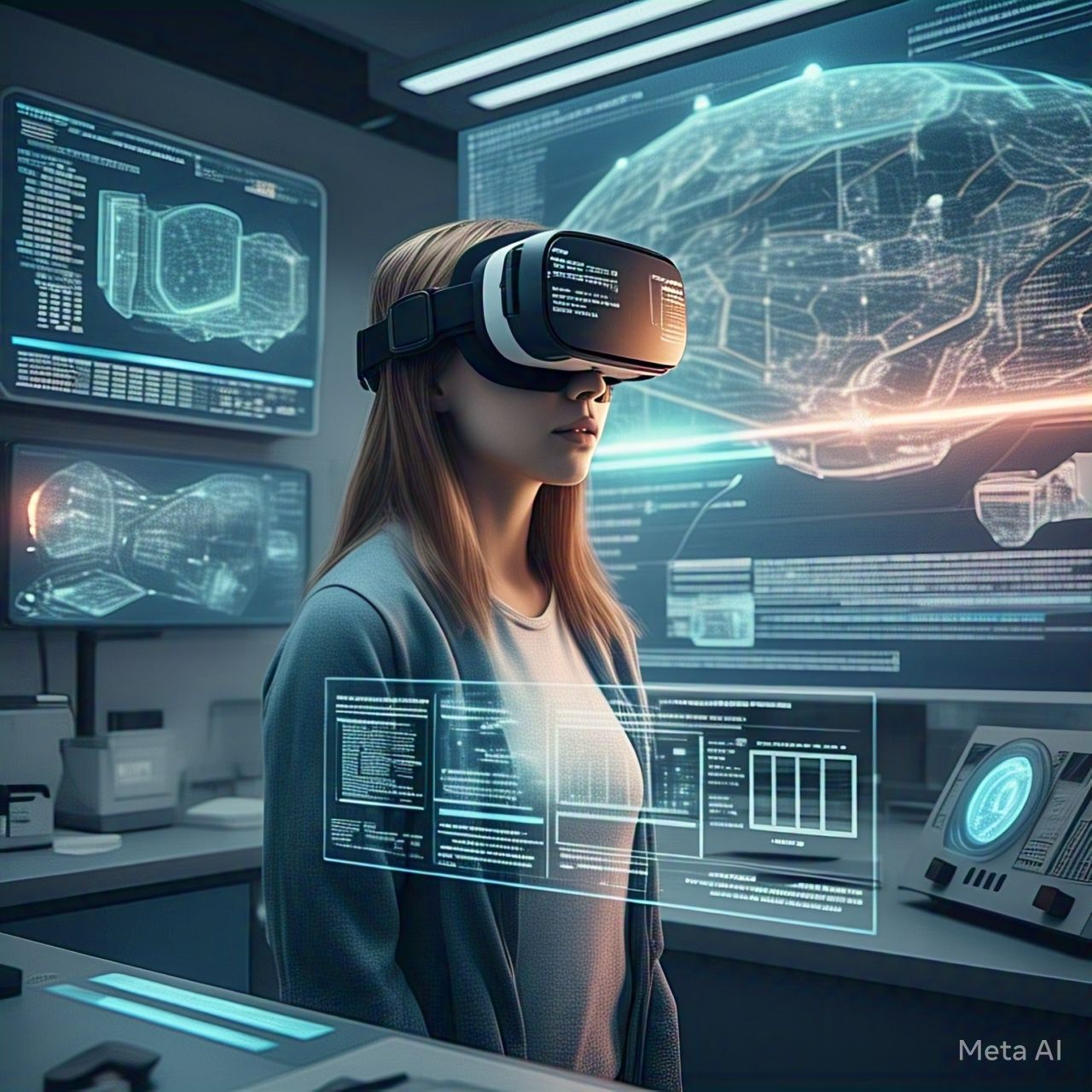Artificial Intelligence (AI) and Augmented Reality (AR) are two of the most transformative technologies of the modern era. When combined, they create groundbreaking applications that redefine user experiences across various industries. From gaming and healthcare to retail and education, AI-powered AR is revolutionizing how people interact with digital content in the real world. This article explores the impact of AI and AR integration, the industries benefiting from this fusion, and what the future holds.
The Power of AI and AR Integration
AI enhances AR by making it more interactive, adaptive, and personalized. Traditional AR overlays digital elements onto the real world, but with AI, these elements become intelligent, capable of responding to user behavior and environmental changes in real time. AI-driven AR applications leverage machine learning (ML), computer vision, and natural language processing (NLP) to deliver more immersive and context-aware experiences.
Key ways AI enhances AR include:
- Real-time Object Recognition – AI enables AR apps to recognize objects, people, and environments, making interactions more dynamic and relevant.
- Personalization – AI tailors AR experiences based on user preferences and behaviors, enhancing engagement.
- Gesture and Voice Control – AI-powered AR apps can respond to voice commands and gestures, creating seamless hands-free interactions.
- Predictive Analytics – AI helps AR systems anticipate user actions and provide proactive recommendations.
Industries Transforming with AI-Powered AR
1. Gaming and Entertainment
The gaming industry has been at the forefront of AI-AR fusion. AI-driven characters, realistic AR environments, and adaptive gameplay mechanics have redefined user experiences. Games like Pokémon GO have shown the potential of AR, and with AI integration, future titles will offer even more immersive and intelligent gameplay.
2. Healthcare
AI-powered AR is making significant strides in healthcare by enhancing diagnostics, surgeries, and patient care. AR-assisted surgeries powered by AI-driven image recognition help surgeons visualize internal organs with greater accuracy. AI-based AR simulations also provide medical training that replicates real-life scenarios.
3. Retail and E-commerce
Retailers leverage AI-driven AR to offer virtual try-on experiences, allowing customers to see how products (clothing, accessories, or furniture) would look before making a purchase. AI analyzes customer preferences to recommend personalized product choices, improving user satisfaction and conversion rates.
4. Education and Training
AI-AR is revolutionizing learning by creating interactive educational experiences. Students can explore historical sites, dissect virtual organisms, or receive AI-driven tutoring in AR environments. Corporate training programs use AI-powered AR simulations to enhance employee skills through realistic scenarios.
5. Manufacturing and Maintenance
In industrial settings, AI-powered AR assists technicians with real-time information, guiding them through complex machinery repairs. AI identifies faults, suggests corrective measures, and overlays visual instructions onto equipment, reducing downtime and improving efficiency.
The Future of AI and AR: What’s Next?
As AI and AR continue to evolve, their combined potential is limitless. Emerging trends include:
- AI-Generated AR Content – AI will automate AR content creation, making it more accessible for businesses and individuals.
- 5G-Powered AR Experiences – Faster connectivity will enable seamless AI-AR interactions with minimal latency.
- Smart AR Glasses – AI-driven AR wearables will become mainstream, enhancing everyday tasks with intelligent overlays.
- Advanced Human-AI Interaction – More natural communication with AI through AR interfaces, integrating eye tracking, emotion recognition, and advanced conversational AI.
Conclusion
The fusion of AI and AR is ushering in a new era of next-gen applications that are smarter, more interactive, and deeply immersive. From enhancing entertainment and education to revolutionizing healthcare and retail, AI-powered AR is shaping the future of technology. As advancements continue, businesses and developers must embrace this synergy to create cutting-edge experiences that push the boundaries of innovation.
By staying ahead of these trends, companies can harness the full potential of AI and AR, driving engagement, efficiency, and growth in the digital landscape. The future is here—are you ready to step into the AI-AR revolution?




